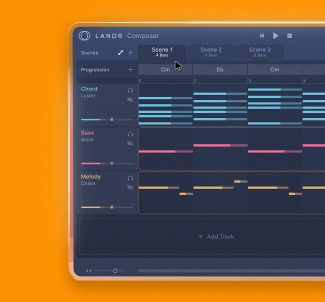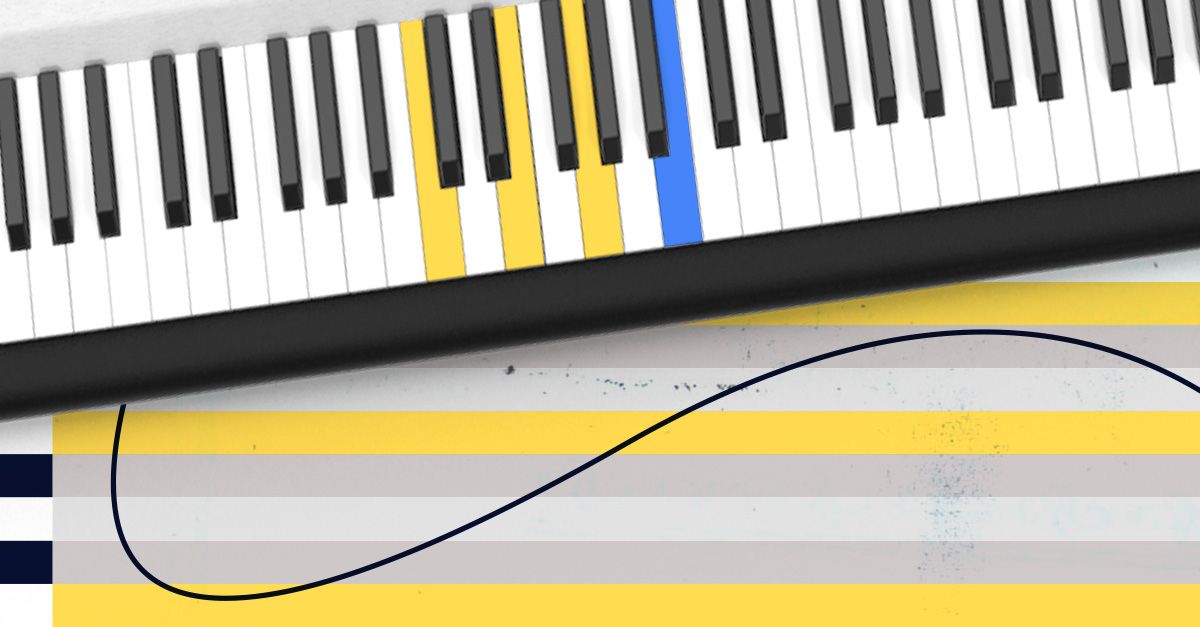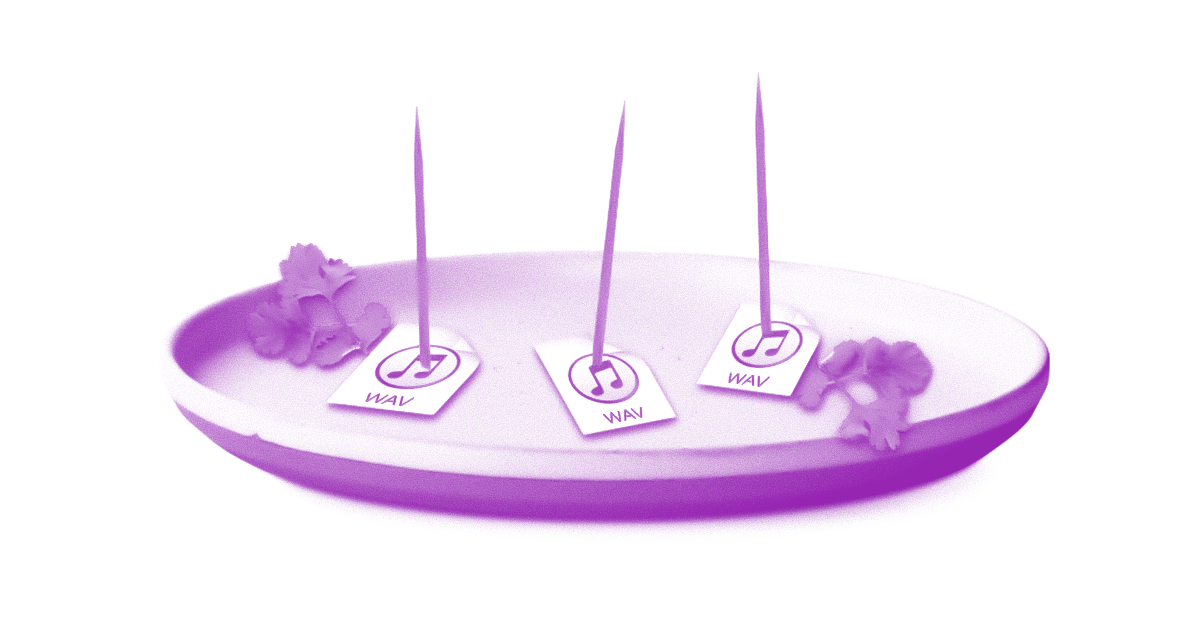
Types of Chords: Learn the 4 Basic Chords and How to Play Them
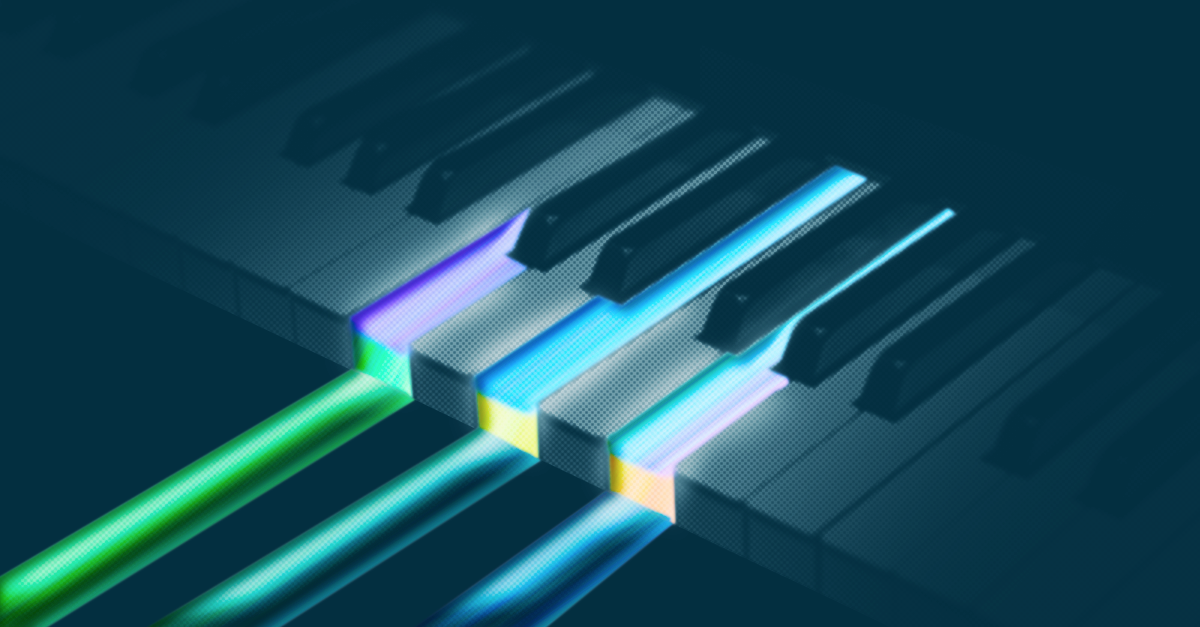
Basic music theory is important for all musicians!
But the truth is, many fail to put the right amount of time and effort into the basics (but not you right? Good).
Devoting even a small amount of energy towards a few basic music theory concepts will pay off in massive ways for your songwriting.
But what are the most important music theory concepts every musician should know?
One of the most vital skills is building chords… Chord-building is a music theory staple with the power to transform how you hear, understand and write music.
Even if you already know how to build chords, a quick refresher will always help to sharpen your skills.
In this article you’ll learn how to build 4 common chords types on any root note in music by memorizing simple patterns of notes. To get the most out of this tutorial, play along with your instrument of choice.
If that’s not available to you, follow along with this handy printable piano visual:
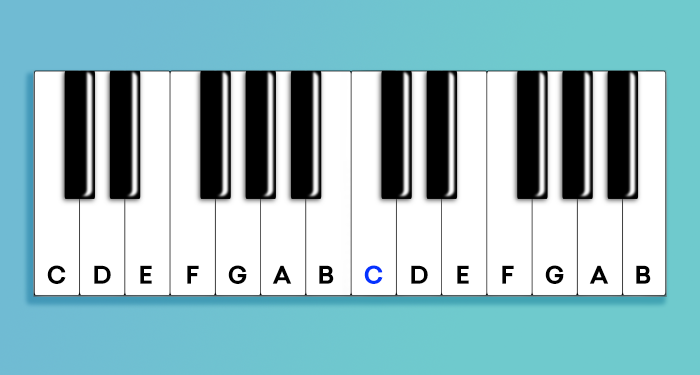
Let’s get started.
The four Types of Chords
What are chords in music?
Chords are two or more harmonic notes played at the same time. Most basic chords are built using three notes. Chords are built on their root note (the starting note). The rest of the notes in a chord are determined by the chord quality.
Chords can be built with dozens of notes, though the result would probably be a huge dissonant mess that wouldn’t be useful for anything other than experimental music.
Try thinking of your music like a building. Your chords are the foundation.
To better understand how chords work in your music, think of your song like a building. Your chords are the foundation.
Listeners won’t always recognize chords in a song, but they provide the shape and space to support a melody. Chords can be played by anything from a guitar to a brass quintet.
Building chords and chord progressions is simple once you understand the basics. But to build chords, you need to know what intervals are first…
What are intervals in music?
Intervals are the note-to-note relationships we hear in music. Chords are simply varying combinations of intervals.
As you’ll soon learn, even the slightest change of a chord’s intervals results in massive changes.
To understand intervals in chords, you need to plug in a specific number of semitones. Semitones are the distance between one note and the one directly above it.
Chords provide the shape and space to support a melody.
On the guitar, a semitone is represented by one fret. On a piano tones and semitones look like this:

Now that you understand the difference between tones and semitones, it’s time to build some chords.
4 Chord types: How to build basic music chords
These 4 basic chord types, or chord qualities, are built using three notes.
First, to make things easy, I’ll show you how to build these chords in the key of C—But once you understand chords in the key of C, you’ll need build chords in other keys to fully grasp chord-building..

Remember, it’s important to master the basics before moving on to more complex material like adding extra intervals to basic chords to transform them into extended chords, but I’m getting ahead of myself!
[adbutler zone_id=”291816″ secure=”1″ type=”asyncjs”]
The 4 basic chord types are:
1. Major Chords
Major chords sound full, resolved and complete. Everything from Tom Petty’s “Free Fallin’” to the “Happy Birthday” song are built from simple progressions of major chords.
Major chords are built by adding the intervals of a major third and perfect fifth above the root. The root, by the way, is the starting note of the chord (in this example our root is C).
The major third interval is the distance between the root and the note four semitones above it. Since C is our root, E is the note a major third above.
For the third note, the perfect fifth is seven semitones above the root. So in our example, this would be the distance between C and G. Put all this together, and you’ll get a C major chord.
Major Third= Four semitones (C to E)
Perfect Fifth= Seven semitones (C to G)
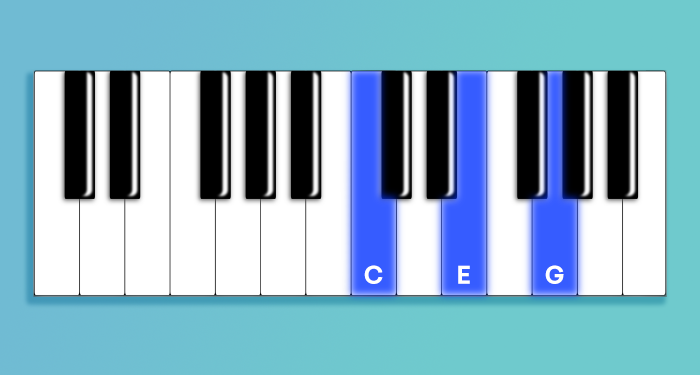
2. Minor Chords
Here’s the good news. If you’ve understood everything up to this point, you’ll be able to master the rest of the basic chords with ease.
Minor chords sound a universe away from the cheery, resolved nature of major chords, but there’s only one note of difference. Most people think these chords sound morose and pensive, though they’re used to convey all sorts of different emotions in music.
If you’ve understood everything up to this point, you’ll be able to master the rest of the basic chords with ease.
Minor chords are built by adding a minor third (three semitones) and perfect fifth above the root.
Minor Third: Three semitones
Perfect Fifth: Seven semitones
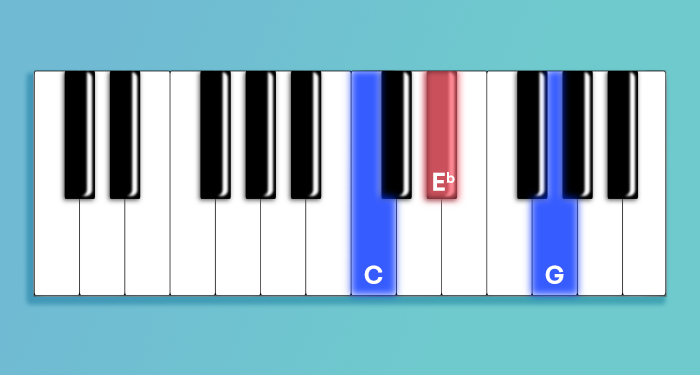
3. Diminished Chords
Diminished chords will add a tense, dissonant sound to your music.
Diminished chords are built by adding a minor third and tritone above the root. A tritone is comprised of six semitones.
Minor Third: Three semitones
Tritone: Six semitones
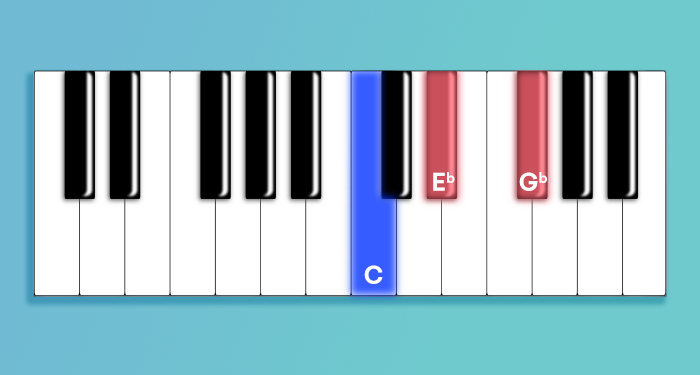
4. Augmented Chords
Augmented chords sound odd and unsettling like something from the soundtrack of a science fiction movie.
Out of all the basic chords, the augmented is the most rarely heard in music. Augmented chords are built just like simple major chords but with an added raised fifth.
The C major chord features the notes C, E and G, so the augmented C chord features C, E and G#.
Major Third: Four semitones
Raised Fifth (minor sixth): Eight semitones

Once you’ve nailed down building basic chords in the key of C, start building chords in other keys too.
Also, and this is super important, start applying your chord-building knowledge to your unique instrument. If your main instrument is something that only produces one pitch at a time, then arpeggiate the notes (play each of the chord’s notes individually in order).
The beauty of simple music theory is that it applies to all pitch-producing instruments. But it only works if you work at applying it to you tools and workflow.
Chord Progressions
Now that you know what chords are, let’s talk about how to use chords in your music. Chord progressions are any series of two or more chords in a piece of music. Depending on the style of music, chord progressions can be simple and repetitive or lengthy and complicated.
If you’re totally new to making music with chords, the 12-bar blues is a great chord progression to start with.
If you’re totally new to making music with chords, the 12-bar blues is a great chord progression to start with.
Going back to the example of C major, a simple 12-bar blues progression can be built using C, F and G major chords. Just add four beats to each chord symbol:
12-Bar Blues in C Major:
C-C-C-C
F-F-C-C
G-F-C-C
Remember, chord progressions don’t need to be long or complicated. In fact, it takes real songwriting talent to make a song with just two chords interesting. Try experimenting with some simple chord progressions and see if you can make it work!
How to use chord extensions
Chord extensions are a powerful tool in any musician’s arsenal, allowing you to add color, depth, and complexity to your music.
By extending major and minor chords, you can create a richer harmonic landscape that brings your compositions to life, especially once you learn how to incorporate voice leading into your chord writing.
Let’s take a moment to explore what chord extensions are, and how you can use them to add harmonic interest to your music.
What are chord extensions?
In their basic form, chords are made up of a root, a third, and a fifth (also known as triads). Chord extensions build upon these fundamental triads by adding additional notes from the scale. The most common chord extensions are the 7th, 9th, 11th, and 13th, which are added on top of the triad.
To understand chord extensions better, let’s look at some examples using both major and minor chords.
Extending major chords
Consider the C major chord, which consists of the root (C), major third (E), and perfect fifth (G). To extend this chord, we can add its major 7th interval (B), resulting in a Cmaj7 chord.
This adds a sense of depth and sophistication to the basic C major chord.
Now, let’s take it a step further and add the major 9th (D). This creates a Cmaj9 chord (C-E-G-B-D).
The addition of the 9th brings a lush, dreamy quality to the chord, perfect for creating a more nuanced and expressive sound.
Here’s an F Major 9, for example.
Extending minor chords
Minor chords can also benefit from chord extensions.
Let’s use the D minor chord as an example, which consists of the root (D), minor third (F), and perfect fifth (A).
To extend this chord, we can add the minor 7th (C), resulting in an Dm7 chord. This adds a moody and emotional quality to the basic A minor chord.
To further extend the D minor chord, let’s add the minor 9th (E). This creates an Am9 chord (D-F-A-C-E).
The 9th adds a touch of tension and intrigue to the chord, making it an excellent choice for adding depth and complexity to your music.
Building better songs with chords
Learning how to build chords might seem tough at first, but like learning your instrument, it gets easier over time with practice.
Practice your chords and build them in several keys. And the next time you listen to music, try actively listening for the chords and progressions and take a mental note of them.
With enough work, knowing how to play, understand and build basic chords will soon be second nature in your own songwriting.
Gear guides, tips, tutorials, inspiration and more—delivered weekly.
Keep up with the LANDR Blog.
